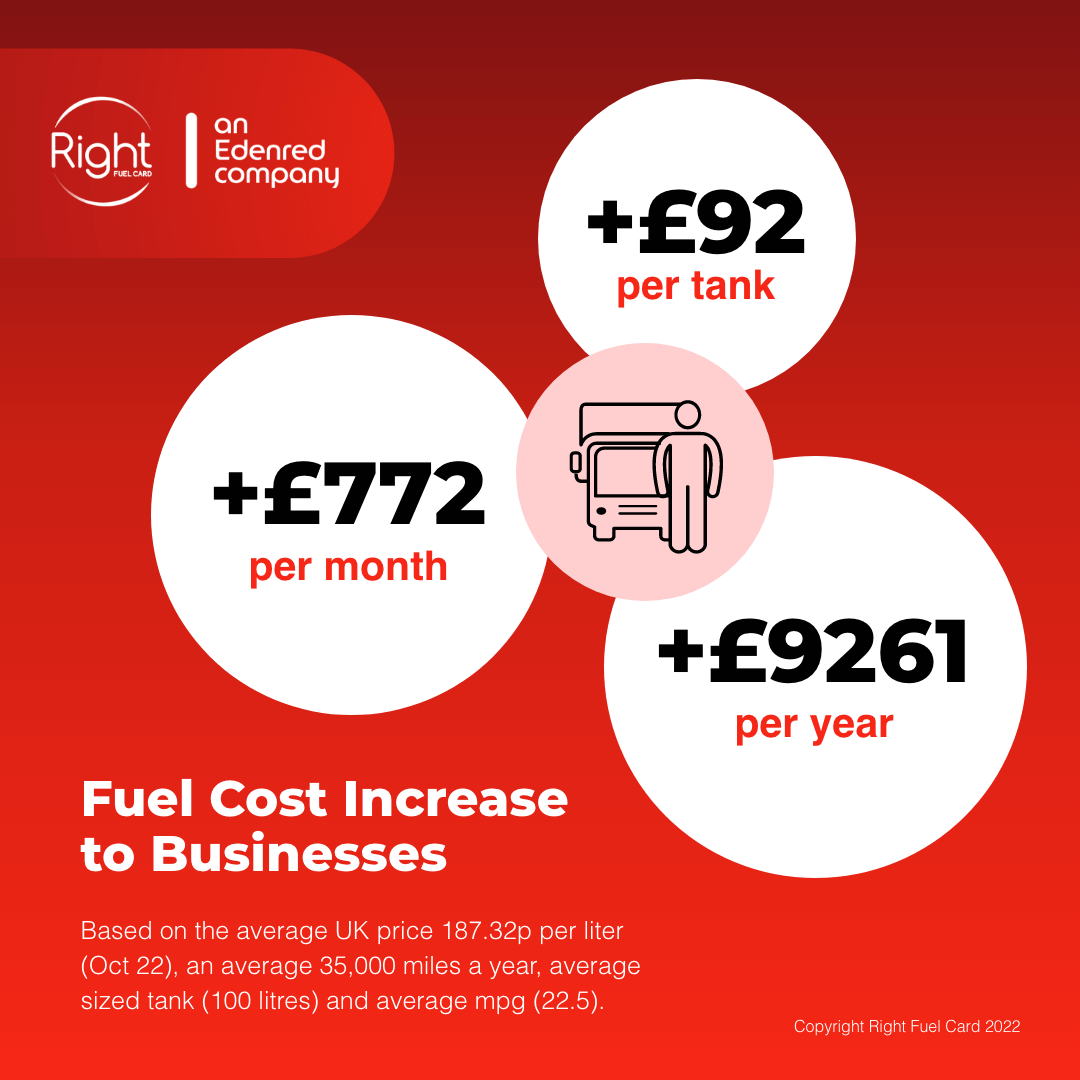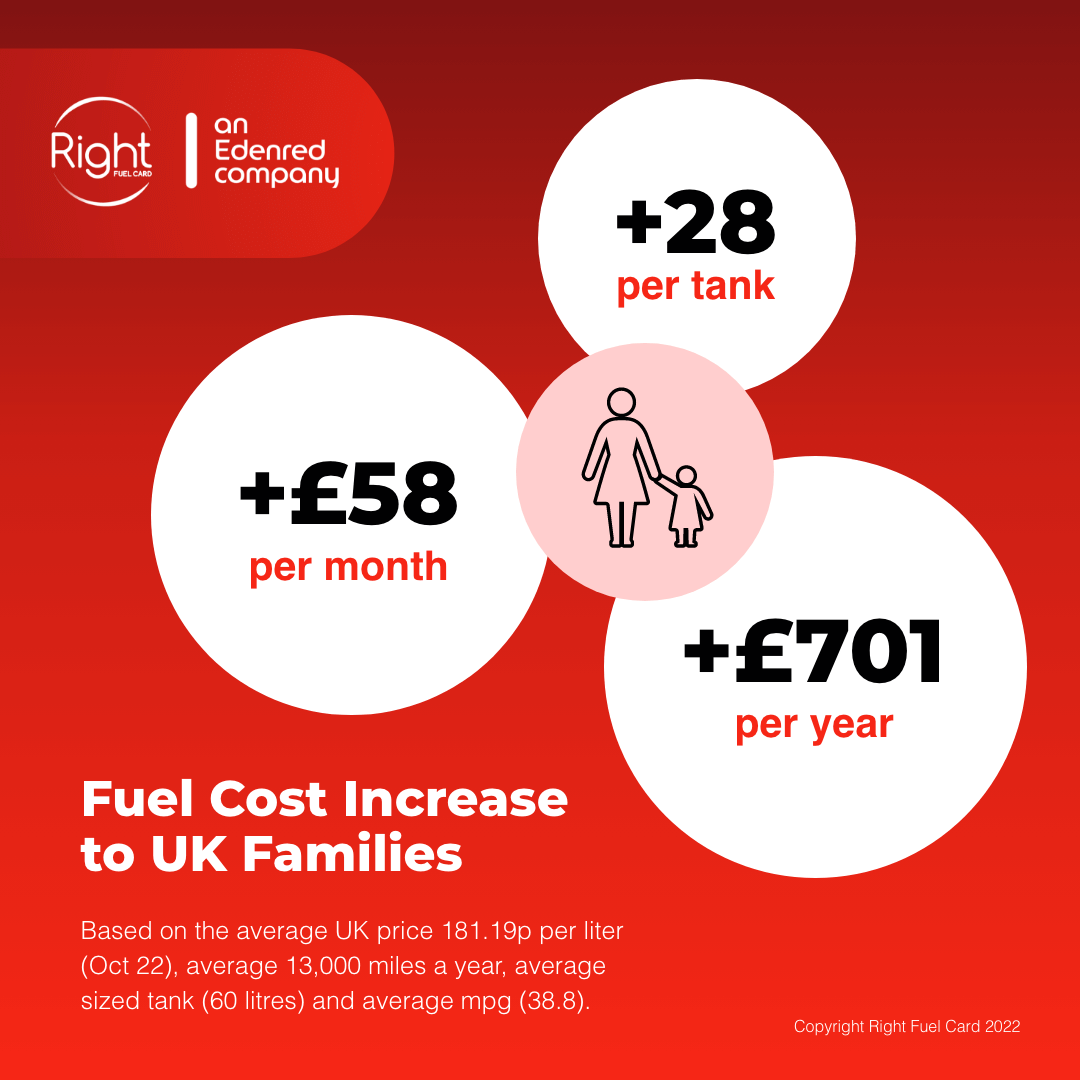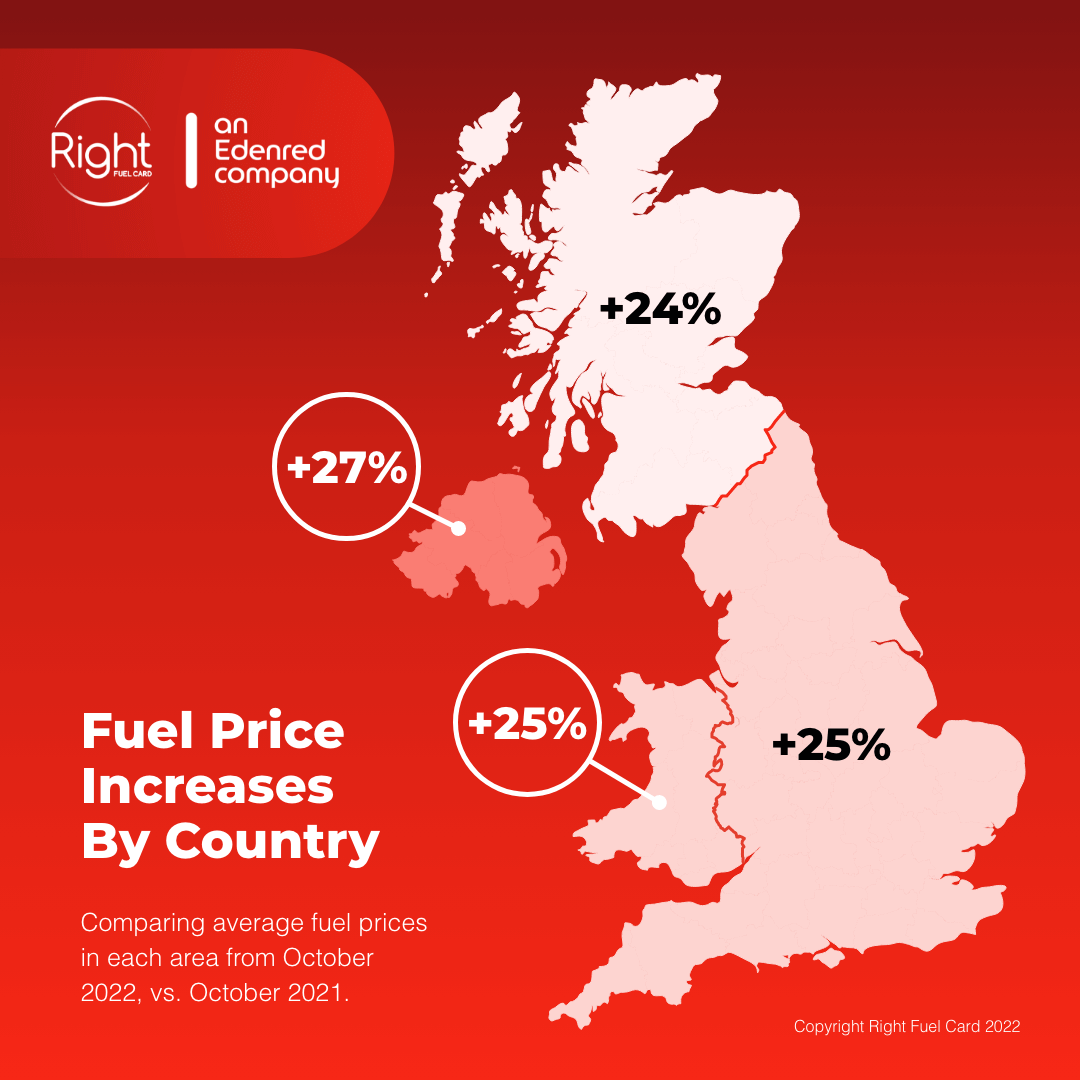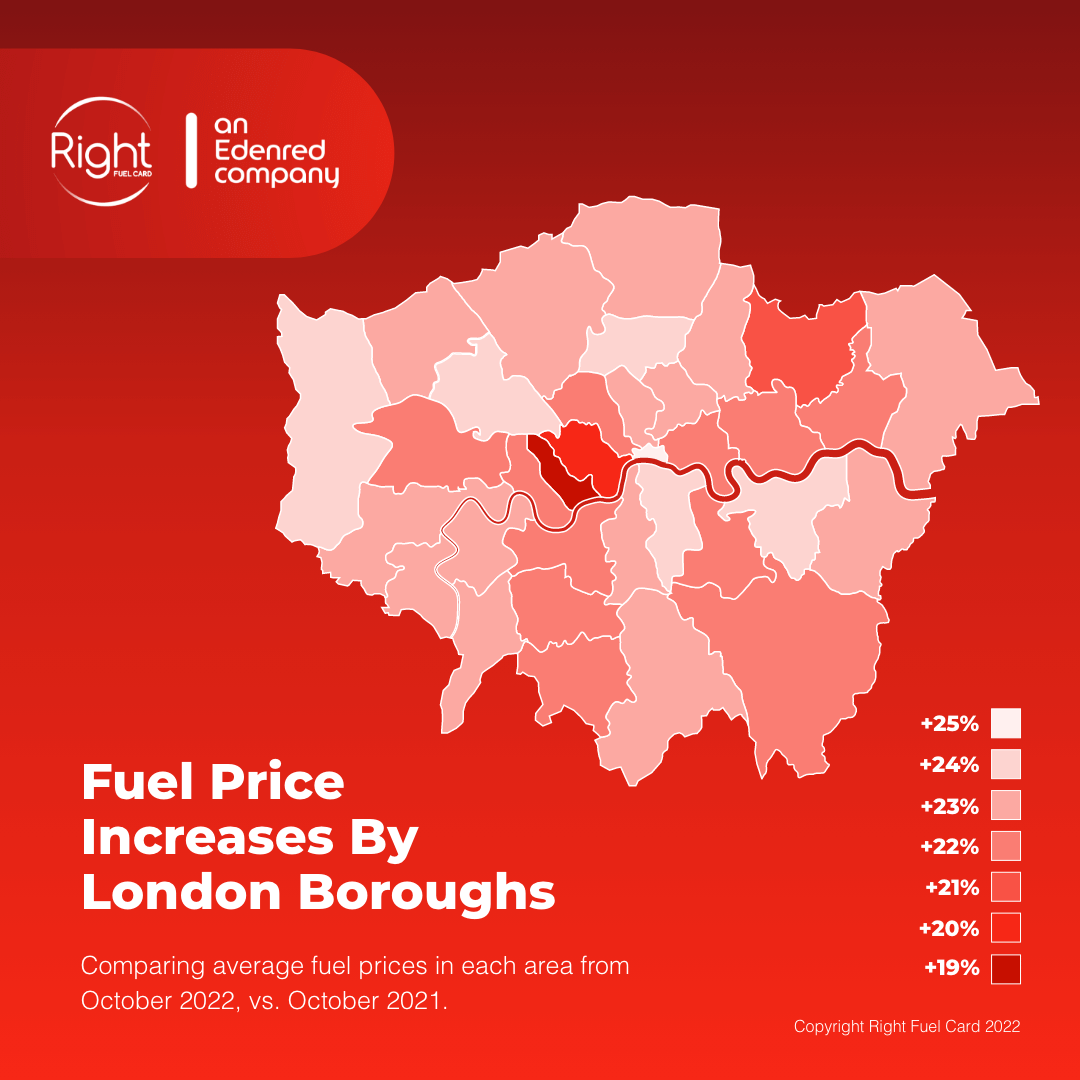Petrol and diesel prices have increased dramatically over the past 12 months, we've taken a deep dive into how different locations have been affected, and how this has impacted people in those areas.
It’s no secret that the expense of just about everything in the UK has spiked, from your food shop to the cost of heating your home, and the price at the petrol pump is no exception. The UK inflation rate has soared so far this year, with a fuel price drop not looking to happen anytime soon either.
The fuel market over the past 12 months has been volatile, to say the least. Back in September 2021, a leaked government briefing discussing a very real concern over the shortage of HGV drivers in the UK saw widespread panic buying of petrol and diesel, driving up fuel prices to record highs at the time. The ripples from the shortage were felt across the country, with snaking queues for empty forecourt pumps everywhere.
In the intervening 12 months, a sequence of events reached a crescendo with Russia’s invasion of Ukraine, which saw crude oil prices go through the roof - particularly after the EU decided to cease trade with Russia in retaliation to the ongoing war. And although we’ve seen peaks and troughs across the year, it looks like petrol prices for 2022 are set to spike again as we head into November.
UK Fuel Prices: October 2021 vs. October 2022
With fuel prices continuing to creep up along with everything else, 2022 is looking to be an expensive year. As such, now’s a good time to figure out how much extra you could be spending on fuel compared to last year.
Below is a fuel price map of the UK, highlighting the average petrol and diesel prices for the country’s major regions, comparing October of 2021 against the same period in 2022.
Click the marker below to see how the price has changed in your area
*Link back to this article to credit the use of the interactive map
Click the infographics below to download and share
 |  |  |  |
*Any images taken from this article must be credited to Right Fuel Card
Rising fuel costs for businesses
Across the UK, the data reveals that petrol prices have increased by around 23% compared to last year, and diesel has seen even bigger price hikes at 27% since 2021.
Taking these figures into account, the average business with just one delivery van driving 35,000 miles a year, could face an additional £91.80 per tank, or £771.80 per month. Across the year? That's £9261.60!
If we think about the average HGV driver doing around 100,000 miles a year, the cost to fill the tank will be around £467.50, an increase of £127.50 compared to last year. Overall, this equates to around £6000 extra per year, for only one HGV!
To up the ante further, a modest haulage company with around 100 HGVs will see extra monthly fuel expenses of just under £50,000, based on the above figures for just one HGV. Yearly, the total tots up to just over £2 million, a jaw-dropping increase of almost £600,000 compared to 2021.
2022 UK Fuel Prices
Cheapest places to fill up
As it stands, you can find the cheapest fuel in the UK up in East Ayrshire, where they’ve seen an overall 25% increase in price, taking them from 133.64 in 2021 to 175.34 - albeit still a huge leap, but significantly better than other locations. Likewise, Carmarthenshire and Halton have also only seen a 25% increase year on year, but East Ayrshire still takes the top spot.
Region | 2021 | 2022 | + / - | % |
East Ayrshire | 133.64 | 175.34 | 41.70 | 25% |
Carmarthenshire | 134.04 | 175.50 | 41.45 | 25% |
Halton | 135.25 | 177.01 | 41.76 | 25% |
Moray | 133.17 | 177.64 | 44.47 | 26% |
Trafford | 134.67 | 177.68 | 43.01 | 25% |
Devon | 135.28 | 177.73 | 42.45 | 25% |
Liverpool | 133.62 | 178.41 | 44.79 | 26% |
Aberdeen City | 134.92 | 178.41 | 43.49 | 25% |
Bolton | 142.16 | 178.42 | 36.26 | 21% |
Kirklees | 132.74 | 178.48 | 45.73 | 27% |
Most expensive places to fill up
On the other hand, the data suggests that Warwickshire holds the title of holding the most expensive fuel across the UK at the moment, with the fuel expense per mile increasing drastically from 138.27 to 185.67. Similarly, Bedford Borough and Inverclyde have seen almost identical price hikes.
Region | 2021 | 2022 | + / - | % |
Warwickshire | 138.27 | 185.67 | 47.40 | 26% |
Bedford Borough | 137.46 | 185.17 | 47.71 | 26% |
Inverclyde | 136.44 | 184.78 | 48.34 | 27% |
Torfaen | 133.09 | 184.74 | 51.65 | 29% |
Cambridgeshire | 139.13 | 184.63 | 45.50 | 25% |
West Berkshire | 137.99 | 184.53 | 46.53 | 26% |
Newport | 133.90 | 184.31 | 50.41 | 28% |
Windsor and Maidenhead | 139.63 | 184.30 | 44.68 | 25% |
Central Bedfordshire | 137.89 | 183.99 | 46.11 | 26% |
Leicestershire | 135.86 | 183.76 | 47.89 | 27% |
Biggest increases year on year
Although the UK fuel price increase has occurred just about everywhere, Torfaen, Milton Keynes and North Somerset have seen the most drastic increases in 2022 compared to last year, with all three locations seeing skyrocketing price increases of almost 30%!
Least change year on year
Some locations have seen a significantly smaller jump in fuel prices compared to their 2021 figures, and these are considered some of the most reliable places to purchase fuel from across the whole of the UK currently. The town of Bolton has been crowned the most reliable in the UK, with the lowest increase of 21% overall, followed by Swansea at 24% and Wolverhampton at 25%.
Best locations for diesel drivers
Again coming in at the top spot, Bolton triumphs as one of the most affordable locations for diesel drivers to purchase fuel from, with prices increasing from 143.85 to 183.52, an overall increase of 21.6%. Bracknell Forest and Swansea take 2nd and 3rd place, although their overall price increases both surpass the 25% mark, considerably higher than Bolton’s figures.
Best locations for petrol drivers
And then when it comes to the petrol drivers, East Ayrshire is crowned the most affordable with prices going from 132.93 in 2021 to 166.61 in 2022, an increase of 25% overall. Similarly, Carmarthenshire and Halton follow closely, both experiencing an overall 26% increase in petrol prices.
Ways to save money on fuel
 | Say no to coastingDriving with your foot on the clutch or with neutral gearing is referred to as coasting driving. And not only is it extremely dangerous, but coasting in neutral drains your fuel at a rapid rate.Low gearing vs high gearingHypermiling refers to practicing good driving habits. Driving in a high gear, alongside preventing braking and accelerating too suddenly are great fuel-saving tips to be more economical on the roads. |
Steady or speedy?It’s tricky to pinpoint the optimum speed to save fuel, as it varies depending on various factors. However, research shows that the majority of cars were most fuel efficient between 45-55mph - within the speed limit, of course.Use a fuel-saving deviceThanks to its ability to maintain one consistent speed, cruise control fuel efficiency techniques are great for improving your fuel economy. However, this is best reserved for motorway driving.Keep your vehicle in checkRegular maintenance and servicing of your vehicle can make all the difference for your fuel economy, even something as simple as replacing your old tyres can work wonders! |
 | Stop, start and GOA fuel-saving engine stop-start system automatically turns off your engine when you’re sitting stationary to reduce time spent idling, a great way to improve your fuel economy.Get a fuel cardManaging a fleet can be costly work. However, using a fuel card that’s suited to the needs of you and your business could help save you some serious pennies in the long run. Get in touchto find out more. |
About this data & our methodology
This data is presented by the Right Fuel Card company. It compares petrol, diesel and combined fuel prices from October 2021 vs. October 2022. No dataset is wholly complete, but to present a complete and full comparison as possible, we have omitted some areas from the map whose prices weren’t complete for each week in the two date ranges.



